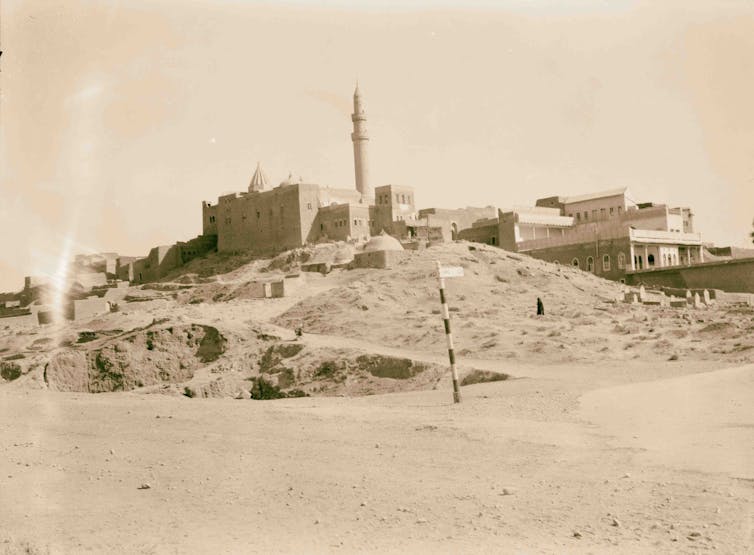Your understanding of Islam is perhaps incomplete without a deeper appreciation of its cultural and intellectual history. History books in the U.S. can give an incomplete picture about the richness of its past, so many students may fail to appreciate the importance of this history.
Islamic scholars contributed to early developments in astronomy, medicine and mathematics. Their work was crucial to Renaissance scientists who built on some of the existing scholarship.
For example, the 11th-century astronomer al-Qabisi, one in a line of famous Islamic astronomers, helped formulate a critique of the then-prevalent notion that the Earth was at the center of the universe. As scholar of Middle Eastern studies Stephennie Mulder writes, that model later informed the view of Nicholas Copernicus, a Renaissance astronomer.
Important works of mathematics were written by Islamic scholars, including substantial contributions to algebra and a commentary on the fourth-century B.C. Greek mathematician Euclid that was later translated into Latin. An early description of surgery to remove cataracts was written by Islamic ophthalmologists in the year 1010.
Many of these scholars were based in Mosul in modern-day Iraq, a city that was occupied by the Islamic State from 2014 to 2017. Mosul was a key center on the Silk Road - a network of trade routes - which also contributed to its rich diversity of people and traditions. As Mulder notes, "The city was home to a diverse group of people: Arabs and Kurds, Yazidis, Jews and Christians, Sunnis and Shiites, Sufis and dozens of saints holy to many faiths." 
Influence of Islam was seen in the cultural history of many countries. Scholar Kishwar Rizvi explains that in medieval Spain, for example, the troubadour poets who were known for their lyrical poetry "borrowed their lyrical beauty from Arabic." Until the 15th century, as Rizvi says, Arabic was the courtly language of southern Spain.
"Such exchanges were common, thanks to the mobility of people as well as ideas," writes Rizvi.
Understanding the rich history of Islamic art can help counter many presumptions about Islam today. In explaining how different religious views were accommodated within Islam, scholar Ana Silkatcheva points to a 19th-century tile from Iran depicting a crucified Jesus surrounded by the Twelve Apostles.
"In Islamic understanding, Jesus was a prophet, granted the same respect as Muhammad, but did not die on the cross," Silkatcheva said. "This is evidently a tile made for or by the Christian community in Persia under Islamic rule."
Art history can be revealing to many Muslims as well. For most Muslims, the depiction of the Prophet Muhammad is considered to be forbidden. However, Silkatcheva writes about a 17th-century manuscript folio that depicts the prophet, suggesting that visual depictions of the prophet were acceptable in the past.
Rizvi offers a reminder from the poetry of 13th-century Muslim mystic Rumi that sums up this belief in peaceful coexistence:
"All religions, all this singing, one song. The differences are just illusion and vanity."
Fact: The Dutch painter Rembrandt collected miniature paintings from the Mughals, a Muslim dynasty that ruled the Indian subcontinent for over 300 years. Silks from the Safavid empire (the Iranian dynasty from the 16th to 18th century) were so popular that Polish kings had their coats of arms woven in Isfahan (from an article written by Kishwar Rizvi, Professor of Islamic Art and Architecture at Yale University).
Further Reading and Resources:
- What's missing in the teaching of Islam
- On Yom Kippur, remembering Mosul's rich and diverse past
- No god but God: A breathtaking exhibition bringing Islamic art out of the shadows
- "The Shrines of the 'Alids in Medieval Syria: Sunnis, Shi'is and the Architecture of Coexistence," by Stephennie Mulder: Scholar Stephennie Mulder's book on Islamic architecture goes beyond Islam's sectarian history to reveal a past marked by cooperation and accommodation.
- "Close Encounters in Medieval Provence: Spain's Role in the Birth of Troubadour Poetry," by María Rosa Menocal.
- "Mathematics and Islamic Art," by Lesley Jones: Jones' journal articles explores Islamic mathematics' influences in art.
- "How Islam changed medicine," by Azeem Majeed, professor of primary care at Imperial College Faculty of Medicine in London.![]()
The Conversation brings you a series of six articles that will explain Islam and its diversity and try to clear common misconceptions. They explore the history of American Muslims and gain a deeper understanding of their faith.
Kalpana Jain is the Senior Religion + Ethics Editor at The Conversation. She has worked as an editor, writer and researcher at Harvard University. She holds a Master in Theological Studies from Harvard Divinity School.
This article was reviewed by Jessica Marglin, Associate Professor of Religion at USC Dornsife College of Letters, Arts and Sciences.
( Source: This article is republished from The Conversation under a Creative Commons license. Read the original article. )